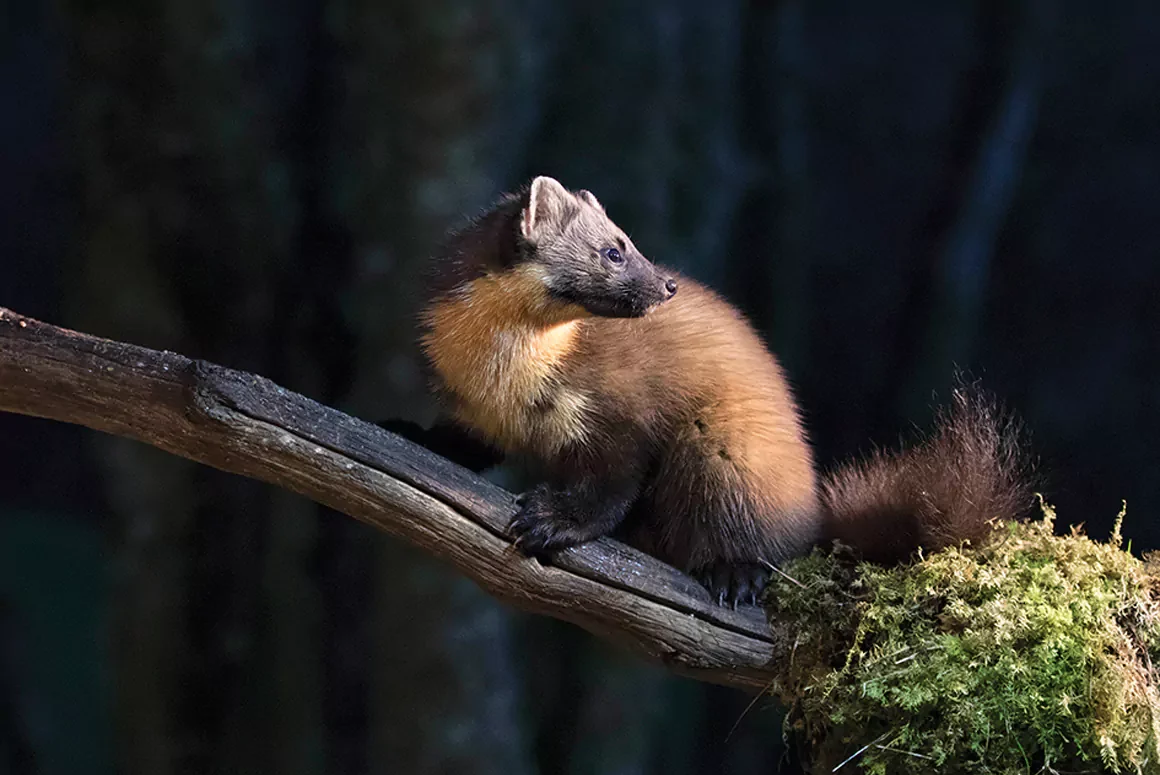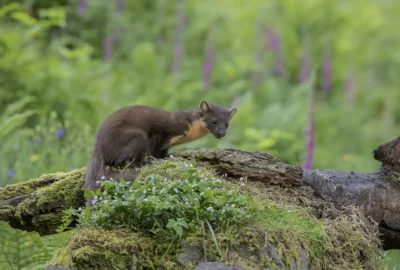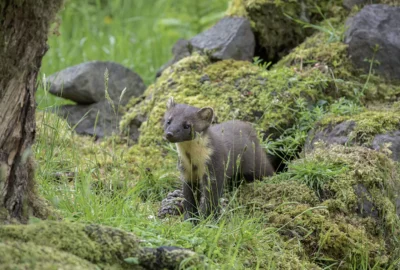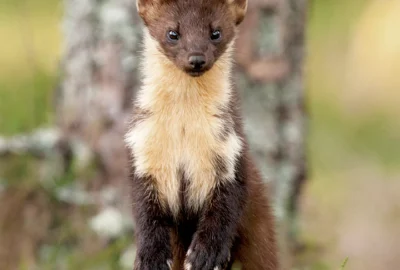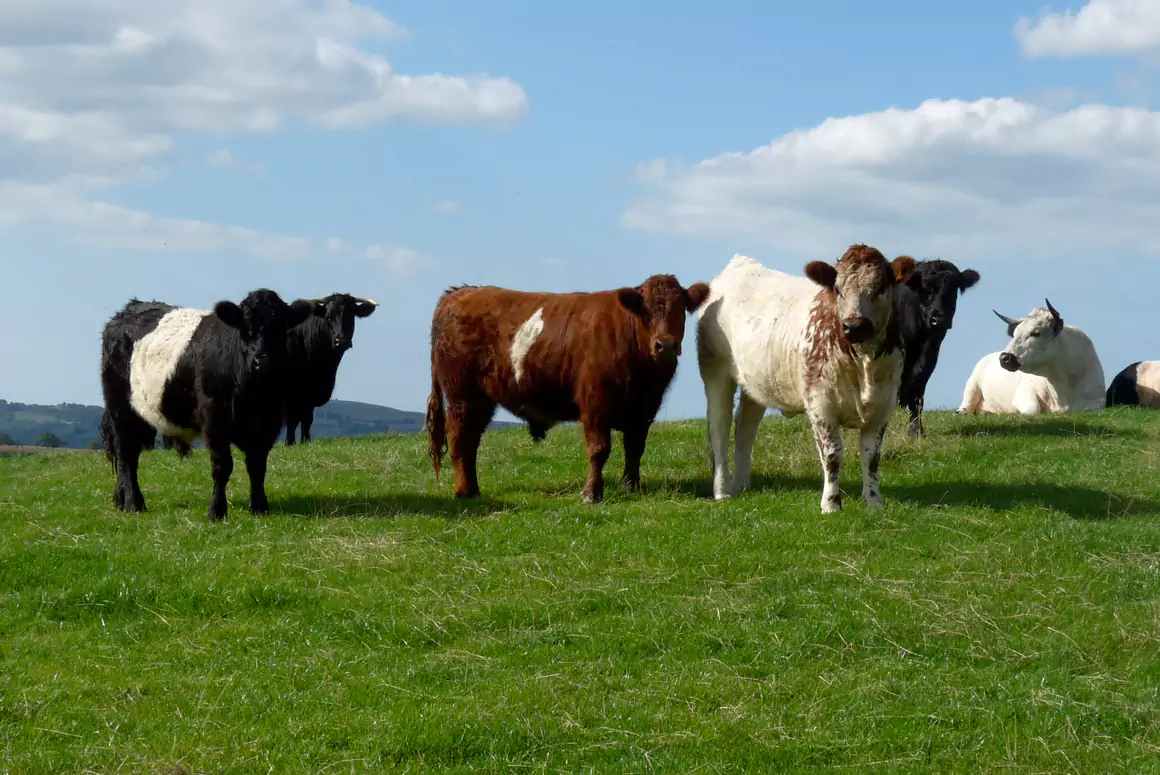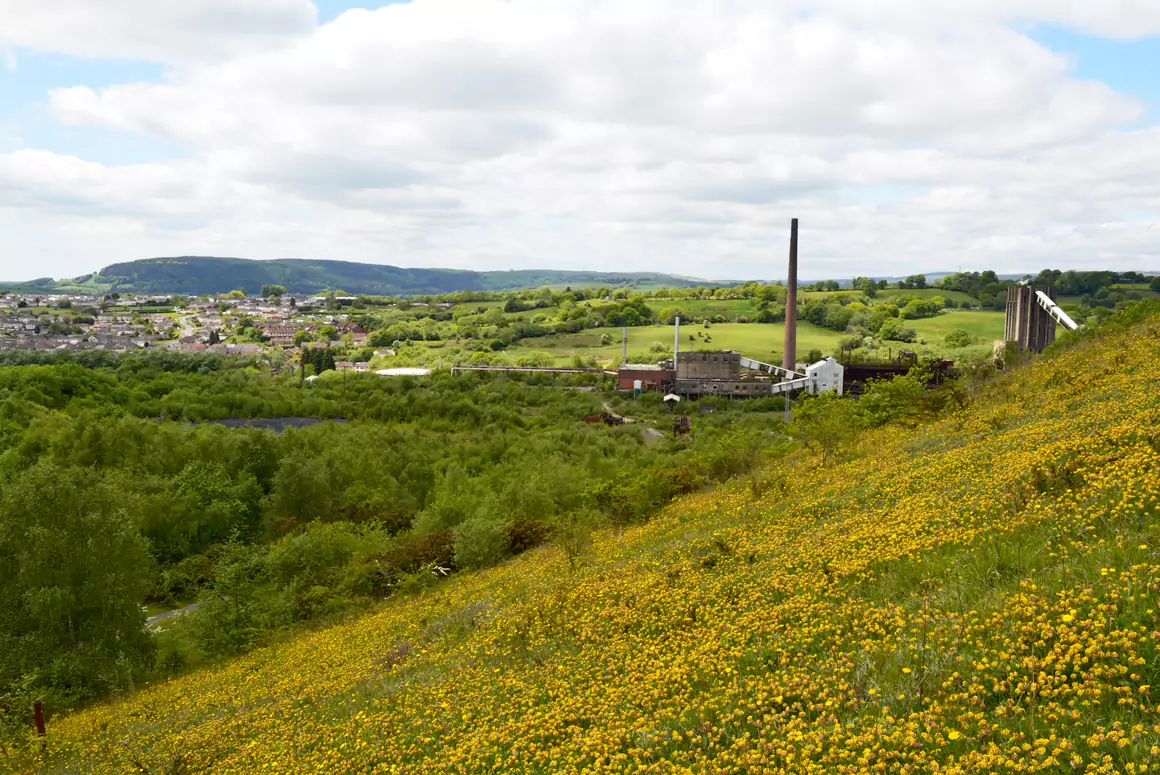![]()
Time flies! Five years ago*, in the early hours of a September morning (about 4am to be more specific), I drove into a vast expanse of woodland, close to Devil’s Bridge, with a precious consignment of four pine martens − of varying temperaments. It was the culmination of many years’ research, a detailed feasibility study and the hard work of some brilliant scientists, conservationists and local volunteers. These native mammals had travelled to mid-Wales from the Scottish Highlands; quite a journey for them and for me. Feeding blueberries to a hungry pine marten in a service station car park on the M6 is something I will not forget.
The pine marten, cousin of the polecat, weasel and stoat amongst others, remains one of Britain’s rarest carnivores. Its decline follows a history of habitat lost, predator control, particularly during the Victorian game shooting heyday, and a historical love of coats adorned with or made of rich chestnut marten fur. It is a mammal steeped in Welsh cultural and natural history, with a plethora of landscape features with marten-related place names: Afon Bele in Carmarthenshire and Castell y Bele in Snowdonia are just two examples. Although still rare, the pine marten has become a symbol of species recovery; a symbol of hope countering the dismal decline in our biodiversity.
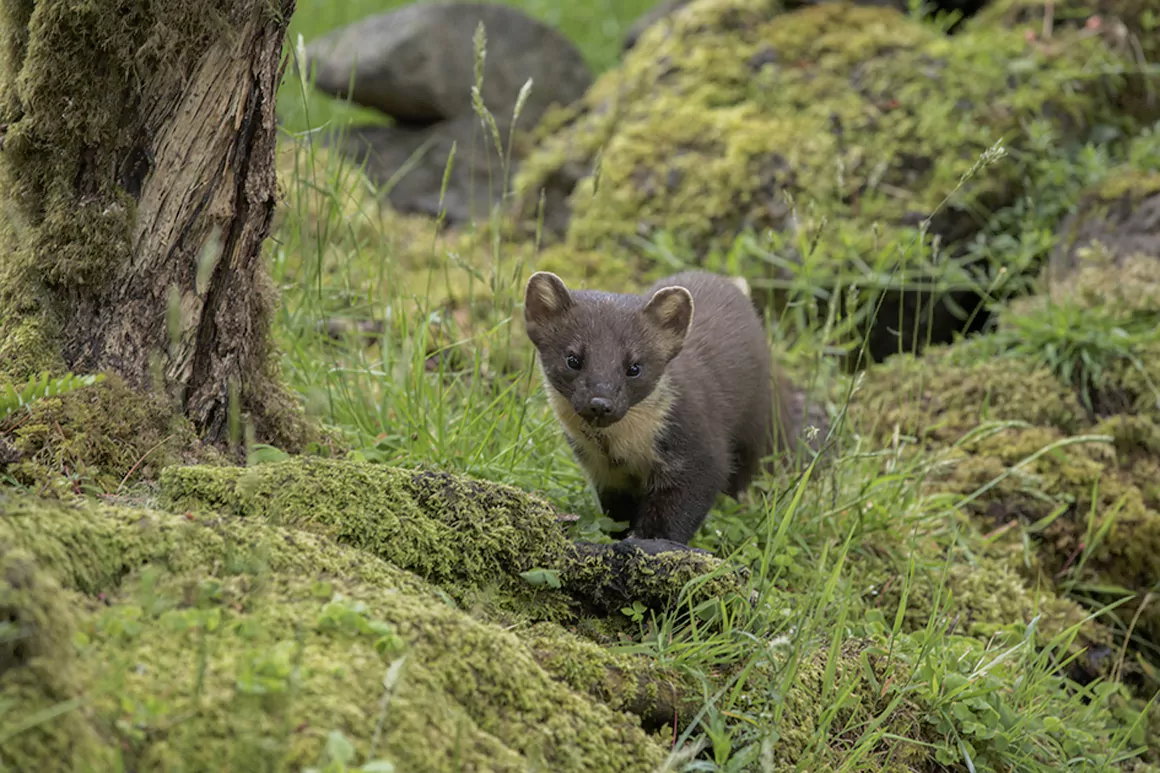
In 2015, the mammal conservation charity, Vincent Wildlife Trust (VWT), with the support of many organisations including Scottish Natural Heritage, Forestry and Land Scotland and Natural Resources Wales, began to reinforce a relict Welsh pine marten population heading for the door marked exit. Fifty-one adult martens and five seasons of kits later and I know that I have been part of a landmark project − the first carnivore recovery programme of its size in Britain. But, of course, it isn’t over − Trust staff and local volunteers continue to check the progress of this new Welsh marten population. With lockdown restrictions in place, checking has not been easy, but at the end of June, news came in that one of VWT’s loyal volunteers, using a remote camera, had captured an image of a pine marten kit in the woodlands not far from Tregaron. This was the first evidence of successful breeding in 2020. Such good news for a Welsh marten population once labelled functionally extinct.
Remote cameras play a crucial part in the ongoing surveillance of the martens and many local volunteers signed up to VWT’s ‘camera trap loan scheme’, providing fascinating footage of the secret lives of the martens.
Today, I have returned to the Rheidol Valley in a vain hope that I might see a marten − or at least evidence of one. To observe a pine marten in the wild is a truly special thing. Only in Scotland have I had that privilege. This elusive, arboreal, cat-sized carnivore, with its flamboyant creamy-apricot bib and long bushy tail, is never one for putting on a public show.
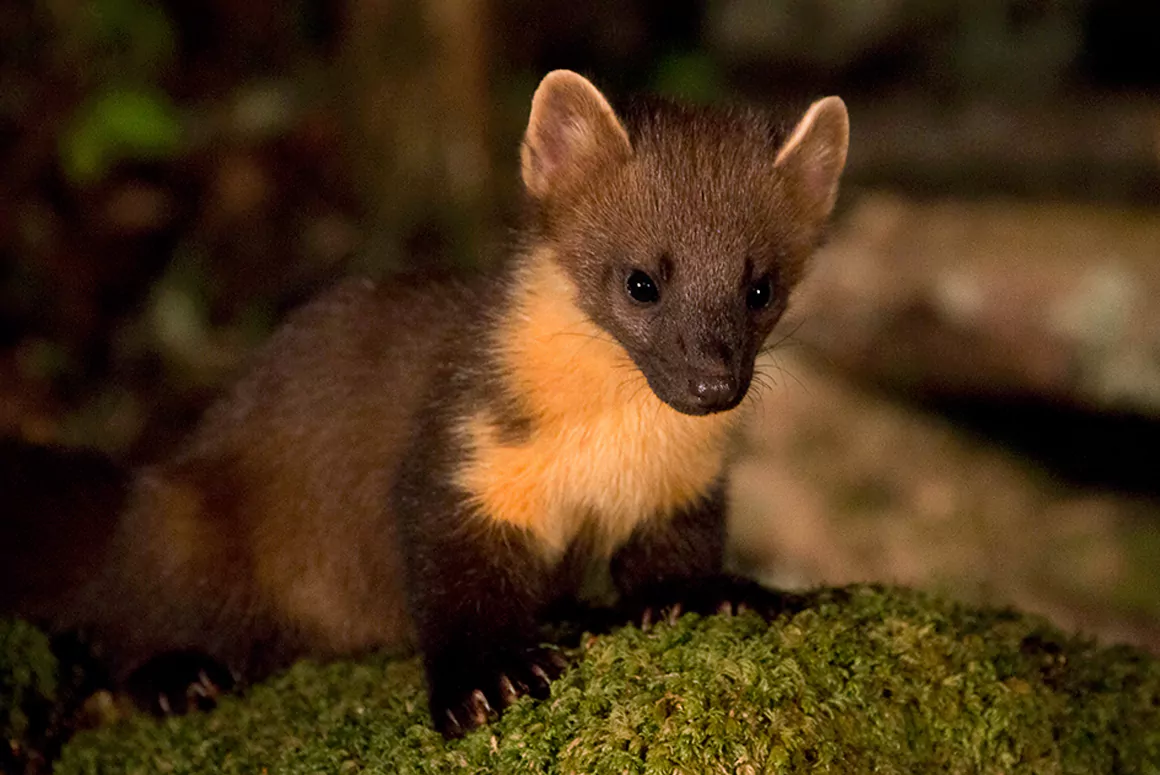
I park in the visitor centre and take one of my favourite paths, the old lead mining track just above the valley floor. The Afon Rheidol winds slowly along this once glaciated valley towards the sea. I stand and stare, rather like the wanderer in Casper David-Freidrich’s painting but without the sea of fog. Across the reservoir, I can just make out the route of the steam railway. No intermittent plumes of smoke. No rhythmic chugging of engines in these pandemic times. No passengers heading to the impressive Mynach Falls. I leave the track and take a path into the Celtic woodland. A pine marten’s largely nocturnal lifestyle means that I probably have more chance of seeing a golden eagle land at my feet (I wish) than spotting a pine marten, but I may at least find a sign of their presence.
Unlike most of its cousins, the pine marten has a convenient habit of leaving droppings as territory markers along paths and at points where paths cross, making these ‘scats’ easy to find. I consider myself an experienced scat hunter, having spent many glorious days hunting for scats in Scotland, a job I selflessly volunteered for when VWT was looking for people to help with a pine marten survey in Scotland. If a marten has left a scat on this path, I will find it – although finding scats in mid-Wales is more of a challenge than in Scotland because there are far fewer martens. Martens also have large territories and live a mostly solitary existence. I may have to eat my words.
To me, marten scats fall into two categories: those that could only be marten, unless they are fox, and those that could really be anything − it is sometimes a question of, shall we say, gut instinct. Scat hunting can therefore be tricky. This did not stop an army of volunteers spending time last year wandering across a sizeable chunk of Wales looking for and collecting scats as evidence of how far the original translocated martens and their offspring had spread from the core release area.
- Credit: Robert Cruickshanks
- Credit: Robert Cruickshanks
- Credit: James Moore
I pass the spot where two colleagues once sat for 12 hours waiting for a female marten to leave her den, so that they could check for the presence of kits. The team had radio-tracked the marten every day for two months to follow her to her natal den. They arrived at 6am and she did not leave her den until 6pm. The marten did indeed have two kits, but sadly, while the mother was out hunting some days later, a camera recorded a kit falling from the den never to be seen again. By coincidence that day a passing fox was also caught on camera – a possible link to the kit’s likely fate.
At the meeting of two forest paths, mounted on a path-side rock and brimming with berry remains, the sparkle of beetle cases and fragments of fur, I discover my first marten scat of the day. Martens are consummate hunters. Voles and other small mammals are top of the menu for these omnivores, but fruit and berries are very much a dietary staple. The scat is quite fresh; it has not been long since a marten passed this way.
Martens are regularly recorded in the Rheidol Valley so it is not surprising that I should find a scat, but it is all the same a thrilling find. To think that a species once perilously close to extinction in Wales is now enjoying a real comeback, and not just surviving but thriving, is breathtaking. This scat is just one small piece of the evidence. I walk on with a noticeable spring in my step and the promise of a latte at the Hafod Hotel at the end of my walk – I hope it is open.
Words: Hilary Macmillan, Head of Communications, Vincent Wildlife Trust
*First published in Welsh Country Magazine, Nov-Dec 2020


